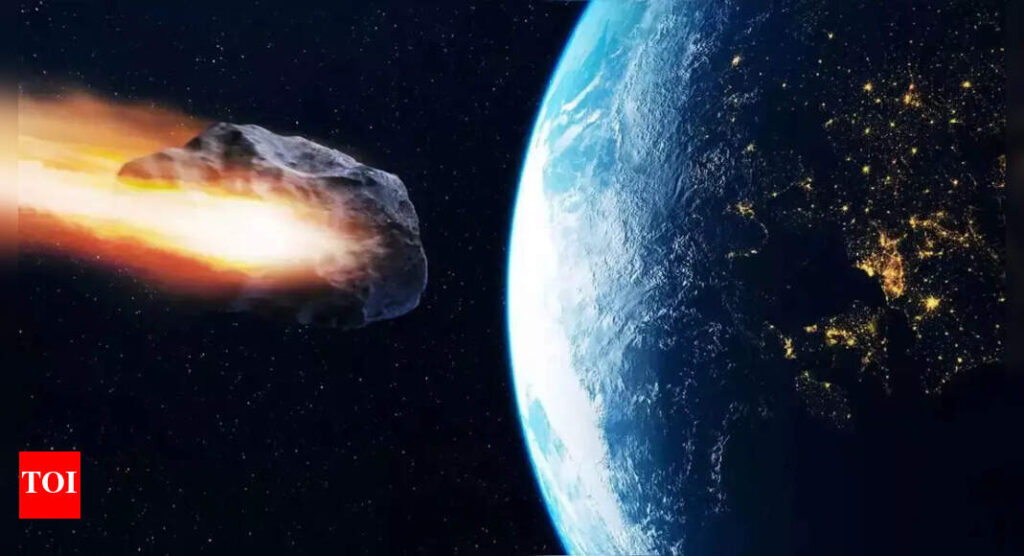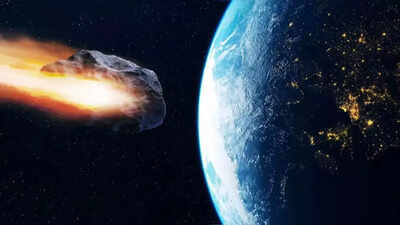A massive asteroid 2003 MH4 is to flyby Earth in a high-speed visit on May 24 at 4:07 PM IST. Designated 387746 (2003 MH4), the huge space rock has a diameter of about 335 meters—about the size of the Eiffel Tower—and will fly by Earth at a speed of 30,060 kilometres per hour.This flyby, although not threatening directly, has drawn considerable interest from NASA’s asteroid observation teams. The agency has classified the event as a “close encounter”, highlighting the significance of continued monitoring of near-Earth objects (NEOs). Although this weekend’s flyby by an asteroid poses no danger, it serves to underscore the pressing need for ongoing astronomical monitoring and planning for preparedness. With advancing technological capability, humankind’s potential to find, monitor, and maybe deflect hazardous asteroids is no longer the stuff of science fiction—but an urgent task for science.
Asteroid 2003 MH4 will fly past Earth on May 24
Asteroid 387746 (2003 MH4) is a member of the Apollo group, which are objects whose orbits cross the path of Earth as it orbits the Sun. Although enormous in size and close during the flyby, the asteroid will pass by safely at a distance of 6.67 million kilometers—about 17 times Earth-Moon distance. Though that might be far off in day-to-day terms, such a path is within the bounds that make an object a Potentially Hazardous Asteroid (PHA). NASA defines any asteroid above 140 meters and approaching within 7.5 million kilometresof Earth as potentially hazardous because of the long-term gravitational effects it would need to change its course.
NASA urges continued observation of near-Earth objects
While 2003 MH4 itself does not threaten harm, experts stress that its flyby is a wake-up call but not an impact warning. Even slight gravitational perturbations from planets or effects like the Yarkovsky effect, a process by which sunlight slowly alters the path of an asteroid, can move the orbits of such bodies over time. “This weekend’s sighting is a warning, not a threat,” — NASA’s Center for Near-Earth Object Studies (CNEOS)The increasing inventory of PHAs highlights the need for ongoing awareness and readiness. Every close passage offers rich information for improving asteroid models and anticipating future encounters.
Close flyby of small asteroid warns of future risks
Before the approach of 2003 MH4, a smaller asteroid had an even closer approach. 2025 KF, a 23-meter-wide asteroid found earlier this year, passed within a mere 111,000 kilometresof Earth on May 21—less than the Moon is from us.Though its comparatively small size, 2025 KF has been seriously considered by researchers. Most such objects are not single boulders but “rubble piles” fall apart easily because they are collections of rock and dust loosely bound together by gravity. These buildups are even more likely to break apart under the pull of Earth’s gravity. Experts say that even tiny asteroids, if they were to crash into Earth, would result in cataclysmic destruction. An asteroid impact of the size of 2025 KF would release energy that is comparable to thousands of nuclear bombs, potentially leading to mass fires, tsunamis, and earthquakes.In the event of a bigger object such as 2003 MH4, the impact could be even more devastating, with worldwide consequences such as “impact winter”—a process where debris and dust trap sunlight, halting world climate and agriculture for years to come.
NASA’s vigilance keeps Earth prepared for asteroid hazards
NASA’s CNEOS, among other international observatories, continues to scan the heavens for unknown and known NEOs. Their purpose is not only detecting early threats but also designing and experimenting with potential planetary defense methods, such as kinetic impactors and gravity tractors to change asteroid trajectories.The 2003 flyby of MH4 is a reminder from space that Earth, although defended by enormous distances and sophisticated detection capabilities, remains exposed to objects in space. Each close call increases our knowledge and refines our readiness.
Asteroid 2003 MH4’s near-Earth pass this weekend: Related FAQs
When and how fast will asteroid 2003 MH4 pass Earth?The asteroid will fly by Earth on May 24 at 4:07 PM IST, traveling at an extremely fast speed of about 30,060 kilometresper hour.What is the size of asteroid 2003 MH4?It measures approximately 335 meters across, roughly the length of three football fields or as tall as a 100-story building.Could the asteroid’s orbit change and become dangerous?Yes. Over time, factors like gravitational pulls from planets or sunlight can slightly shift its trajectory, which is why continuous observation is vital.What measures does NASA take to protect Earth from asteroids?NASA’s teams constantly monitor near-Earth objects and are researching ways to deflect or alter asteroid paths if any threat is detected, using methods like kinetic impactors or gravity tractors.Also Read | ISRO chief announces 2025 as ‘Gaganyaan Year’ with first mission featuring Vyommitra robot to launch in December


